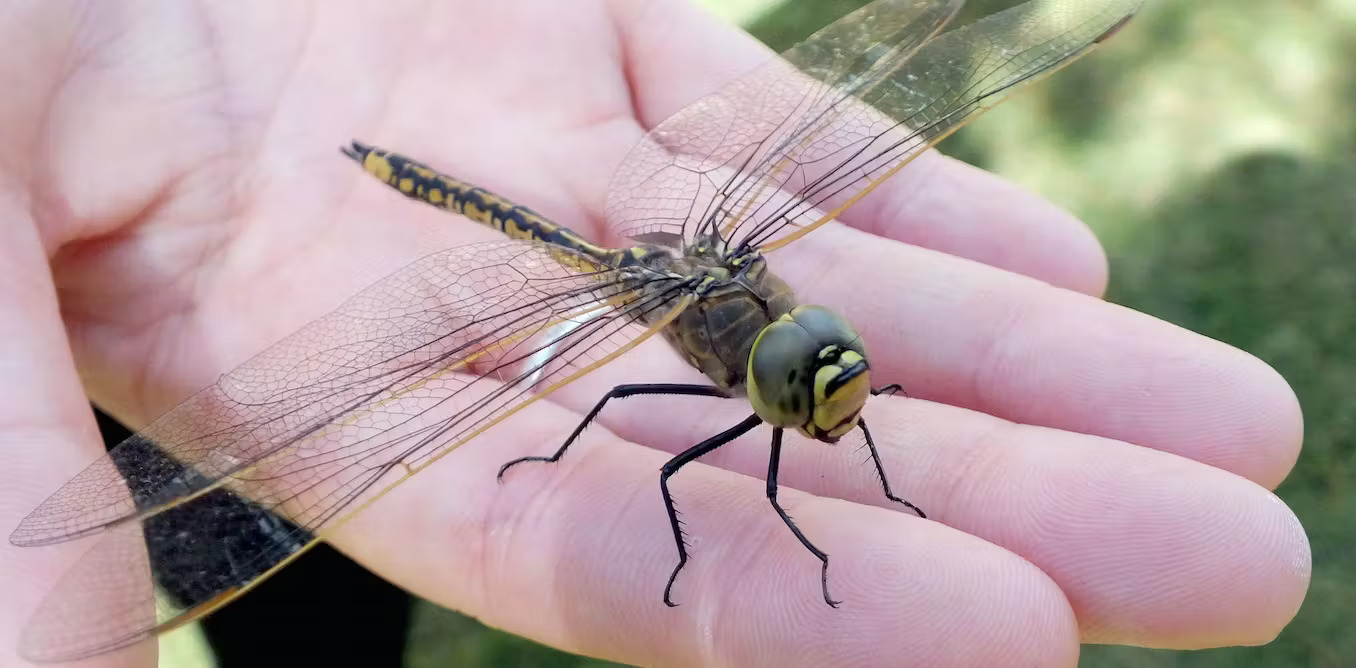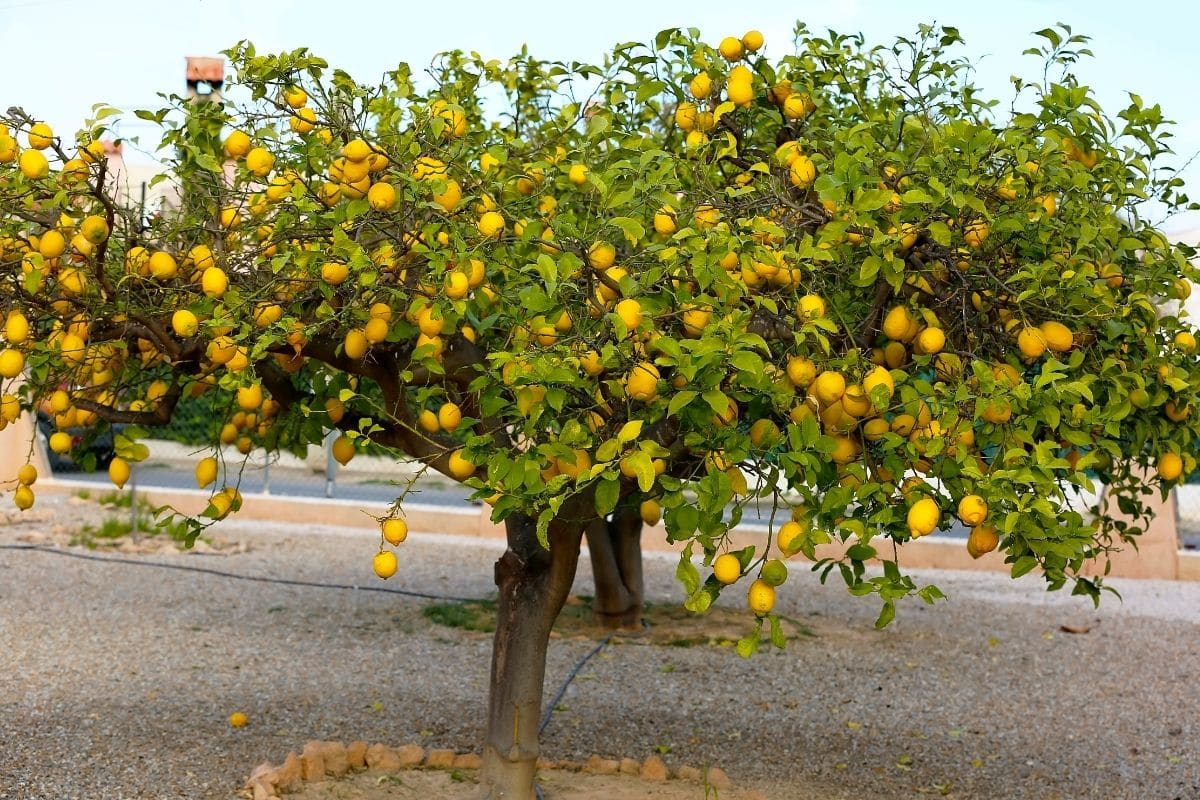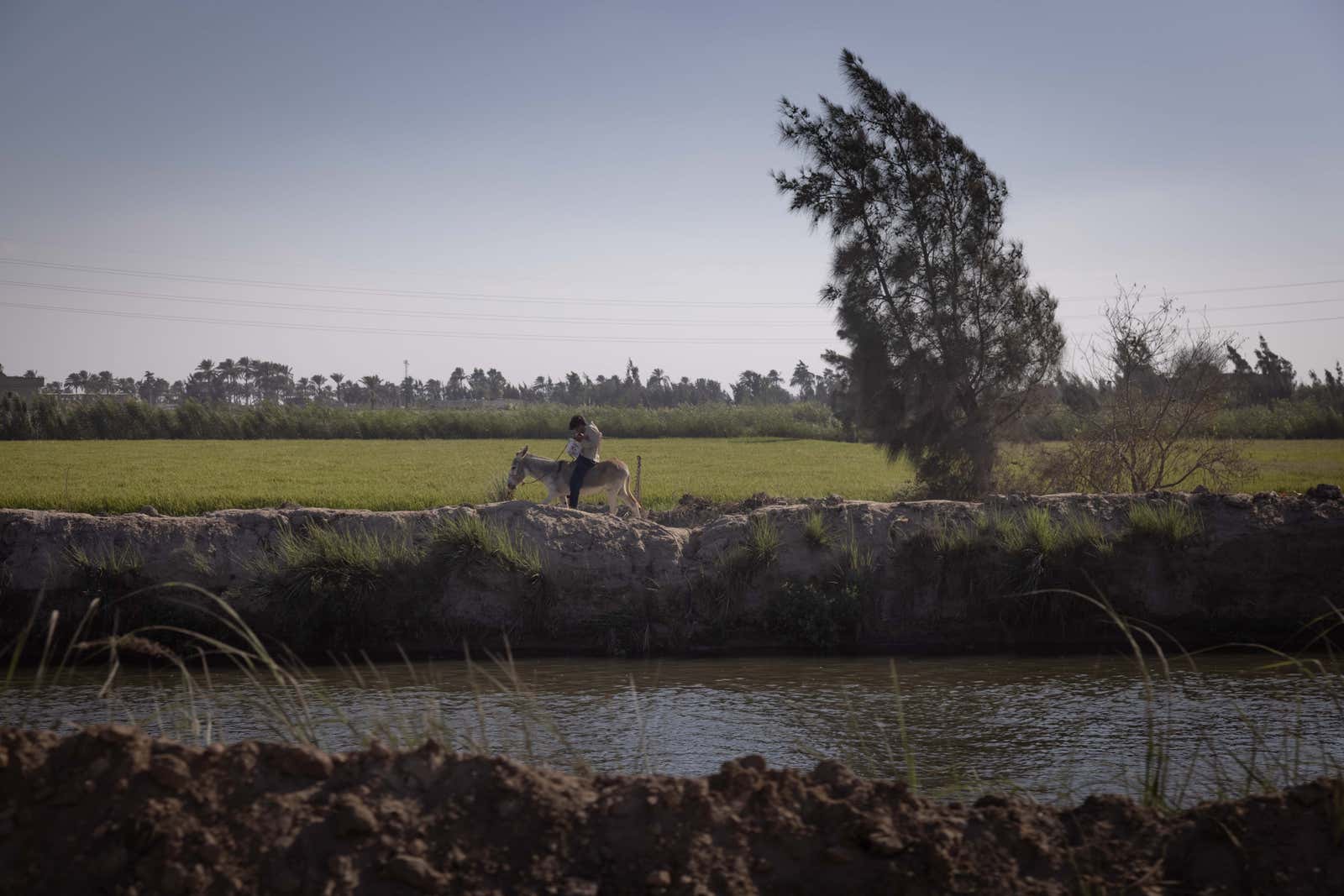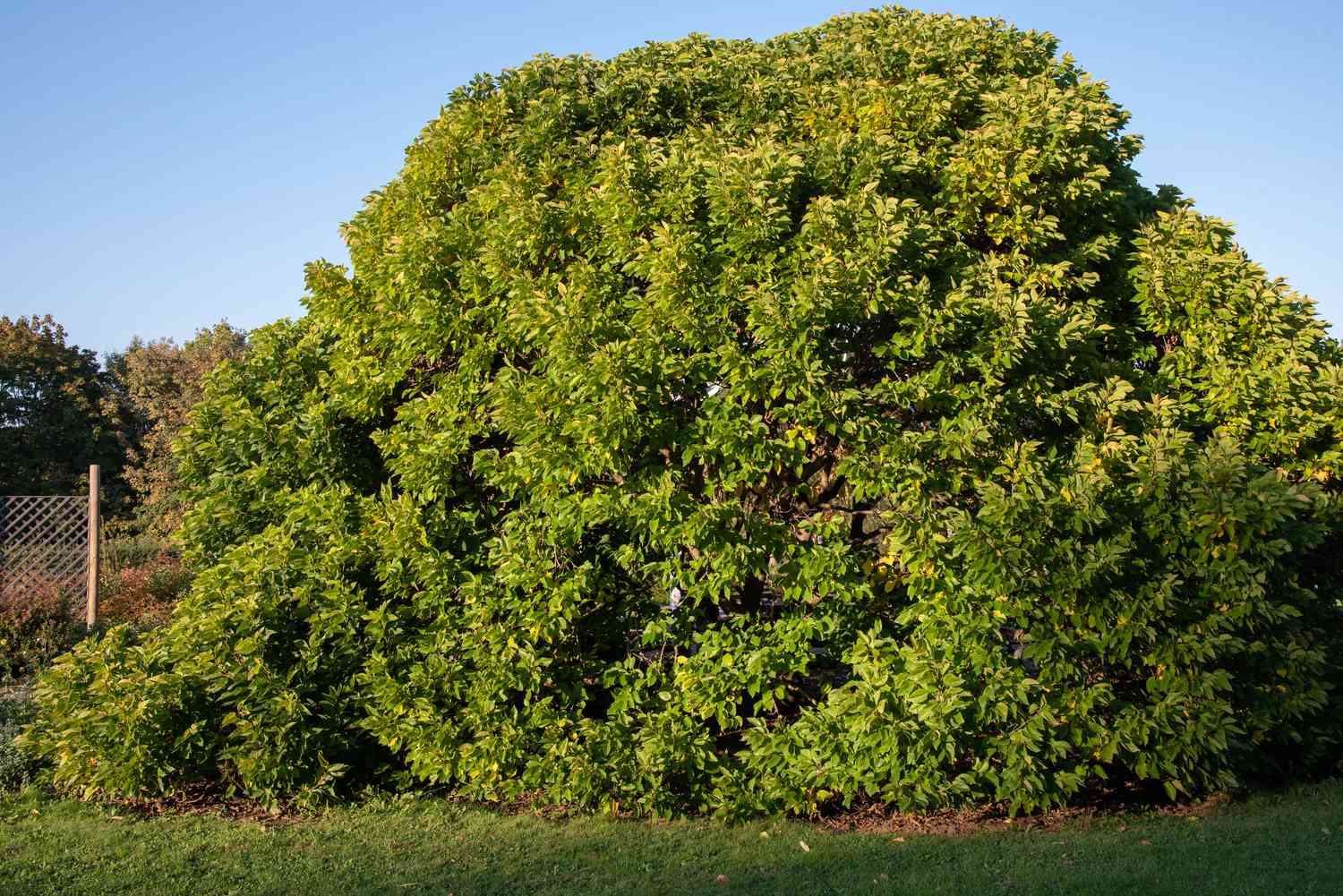Home>Gardening News and Trends>Latest News>How Big Did Insects Used To Be


Latest News
How Big Did Insects Used To Be
Published: December 11, 2023
Latest News: Discover the astounding size of prehistoric insects and how they compare to their modern counterparts. Learn about the fascinating world of ancient insects.
(Many of the links in this article redirect to a specific reviewed product. Your purchase of these products through affiliate links helps to generate commission for Chicagolandgardening.com, at no extra cost. Learn more)
Table of Contents
Introduction
Throughout the history of our planet, insects have been some of the most successful and diverse creatures to inhabit the Earth. From tiny ants to massive beetles, insects have adapted to virtually every terrestrial environment and have played essential roles in ecosystems worldwide. However, you may be surprised to learn that the size of insects has varied greatly over time. In the past, insects were often much larger than their counterparts today, with some reaching sizes that are unimaginable to us now.
Fascinatingly, the size of insects is not only determined by genetics but also influenced by various environmental factors, including temperature, oxygen levels, and available resources. These factors can lead to either gigantism or dwarfism in certain insect species. By studying ancient insect fossils, paleoentomologists have been able to unravel the secrets of the incredible sizes that insects once achieved.
In this article, we will delve into the world of ancient insects and explore the factors that influenced their size. We will discuss the field of paleoentomology, which involves the study of prehistoric insects through fossil evidence. Additionally, we will examine some fascinating examples of oversized ancient insects that once roamed the Earth millions of years ago. Finally, we will consider the reasons behind the decreased insect sizes we observe today and compare them to their prehistoric ancestors.
Factors that Influence Insect Size
The size of insects is influenced by a combination of genetic and environmental factors. Some of the key elements that affect insect size include:
- Temperature: Insects are ectothermic creatures, meaning their body temperature is regulated by their environment. Warmer temperatures tend to promote faster growth rates and larger sizes in insects.
- Oxygen Levels: Oxygen availability can have a significant impact on insect size. Higher oxygen levels in the atmosphere during certain periods of Earth’s history have been associated with larger insect sizes.
- Resource Availability: The availability of food and other resources plays a crucial role in determining insect size. Insects that have access to ample nutrition during their development are more likely to grow larger.
- Predation Pressure: Predation can also influence insect size. Insects that face significant predation pressures may evolve smaller sizes to enhance their chances of survival and evasion from predators.
- Competition: Intra- and inter-specific competition can impact insect size. When resources are limited, insects may evolve smaller sizes to reduce competition and increase their chances of resource acquisition.
It is important to note that these factors do not act in isolation, but rather interact with each other. For example, changes in temperature and oxygen levels can impact resource availability, which in turn affects the size of insects. Additionally, the influence of these factors can vary depending on the specific insect species and their ecological niche.
Understanding the various factors that influence insect size provides valuable insights into the evolution and adaptation of these remarkable creatures over time. By examining the fossil record and studying the ecological context in which ancient insects lived, scientists can uncover the secrets behind the incredible sizes that insects once achieved.
Paleoentomology: Discovering Ancient Insects
Paleoentomology is a field of study that focuses on the investigation of prehistoric insects through the examination of fossilized remains. By combing through ancient sediments and rock formations, scientists have uncovered an extraordinary wealth of information about the insects that inhabited the Earth millions of years ago.
One of the main sources of information for paleoentomologists is amber. Amber is fossilized tree resin that can preserve insects, as well as other small organisms, in remarkable detail. These fossilized insects offer a glimpse into the past, allowing scientists to study their morphology, behavior, and ecological relationships.
Additionally, fossilized insect remains can be found in sedimentary rock formations. By carefully extracting and analyzing these fossils, scientists can gain insights into the size, shape, and characteristics of ancient insects.
Paleoentomology has revealed a remarkable diversity of ancient insect species, many of which have gone extinct. This wealth of information has provided valuable data on the sizes and shapes that insects once attained.
Furthermore, by studying the ancient insect fossil record, scientists have been able to reconstruct the ecosystems of the past. Examining the co-occurrence of different insect species and their interactions with plants and other organisms sheds light on the intricate web of life that existed millions of years ago.
With advancements in technology and imaging techniques, such as high-resolution microscopy and CT scanning, paleoentomologists can now observe and analyze these ancient insects in unprecedented detail. This allows for a more comprehensive understanding of their anatomy, physiology, and evolutionary history.
Overall, paleoentomology has revolutionized our knowledge of prehistoric insects, providing a window into their ancient world and helping us unravel the mysteries of the incredible sizes that these creatures once achieved.
Gigantism in Prehistoric Insects
Gigantism refers to the phenomenon of unusually large size in certain organisms compared to their modern counterparts. In the world of insects, prehistoric times were characterized by the existence of numerous species that displayed remarkable gigantism.
One of the main factors contributing to gigantism in prehistoric insects was the higher oxygen levels present in the Earth’s atmosphere during those periods. Insects have a unique respiratory system that relies on oxygen diffusion through tiny tubes called tracheae. With higher oxygen concentrations, ancient insects had increased access to this vital respiratory gas, allowing them to grow to enormous sizes.
Another contributing factor to gigantism was the absence of certain physiological constraints that restrict insect size today. For instance, the tracheal system of insects has inherent limitations on how efficiently oxygen can be transported throughout the body. In larger insects, this limitation becomes more pronounced, making it difficult for modern species to reach the sizes seen in their prehistoric ancestors.
Moreover, the absence of large vertebrate predators during certain periods of Earth’s history may have also facilitated the evolution of gigantism in insects. Without the constant pressure from predators, insects had fewer constraints on their size and were able to grow to unprecedented dimensions.
Gigantism was not limited to a single group of insects but was observed across various taxa. Insects such as dragonflies, millipedes, and beetles reached sizes that are inconceivable today. For example, ancient dragonflies of the genus Meganeura had wingspans of up to two feet (60 cm), making them giants compared to their modern relatives.
This gigantism in prehistoric insects had significant implications for the ecosystems in which they lived. These massive insects played important roles as predators, prey, and pollinators, shaping the dynamics of ancient ecosystems in ways that are unfamiliar to us today.
Understanding the factors that allowed for gigantism in prehistoric insects provides insight into the complex interplay between environmental conditions and organismal size. By studying these ancient giants, scientists can gain a deeper appreciation for the incredible diversity and adaptability of the insect world throughout history.
Examples of Enormous Ancient Insects
The fossil record has unveiled numerous examples of ancient insects that achieved astonishing sizes during prehistoric times. Here are a few remarkable examples:
- Meganeura: Meganeura was a genus of giant dragonflies that roamed the Earth during the Carboniferous period, approximately 300 million years ago. With wingspans reaching up to two feet (60 cm), Meganeura was one of the largest flying insects ever recorded. These impressive predators ruled the skies and hunted smaller insects with their formidable jaws.
- Arthropleura: Arthropleura was a genus of giant millipede-like arthropods that existed during the Carboniferous period. Some species of Arthropleura could grow to lengths of up to 6.5 feet (2 meters), making them the largest land-dwelling arthropods to have ever lived. Despite their intimidating size, they were likely herbivorous and fed on plant matter.
- Meganeuropsis: Similar to Meganeura, Meganeuropsis was a genus of enormous dragonflies that lived during the Permian period, approximately 280 million years ago. These dragonflies had wingspans that ranged from 18 to 28 inches (45 to 70 cm), making them comparable in size to modern birds. They were powerful fliers and were likely apex predators in their ancient ecosystems.
- Titanus: The Titanus beetles were a group of enormous beetles that lived during the Eocene epoch, around 50 million years ago. With lengths of over six inches (15 cm), Titanus beetles were among the largest beetles ever recorded. These impressive insects likely occupied a variety of ecological niches and were well-adapted to their environments.
These are just a few examples of the many incredible ancient insects that once dominated the Earth. Each species had its own unique adaptations and played critical roles in their respective ecosystems.
Studying these giant insects provides a glimpse into the diversity and complexity of prehistoric life. These incredible creatures demonstrate the remarkable possibilities that arise when environmental conditions, such as oxygen levels and predator-prey relationships, work in favor of gigantism.
Uncovering these ancient insect giants allows us to appreciate the immense range of sizes that insects once achieved and shows us the incredible evolutionary journey they have undergone over millions of years.
Causes of Decreased Insect Size
The decrease in insect size observed in modern times compared to their prehistoric ancestors can be attributed to several factors:
- Decreased Oxygen Levels: Over time, oxygen levels in the Earth’s atmosphere have significantly decreased compared to prehistoric eras. As insects rely on oxygen diffusion through their tracheal system, reduced oxygen availability has placed constraints on their maximum size. The limited capacity to meet the oxygen demand of larger bodies prevents modern insects from reaching the enormous sizes seen in ancient times.
- Evolutionary Trade-offs: Insects face a variety of selective pressures in their environments, such as competition for resources and predation. These pressures have led to evolutionary trade-offs where smaller body size can offer advantages in terms of agility, resource efficiency, and predator evasion. Smaller insects can navigate complex habitats more easily and exploit diverse food sources, increasing their overall reproductive success.
- Human Impact: Human activities, including deforestation, habitat destruction, pesticide use, and climate change, have had a detrimental impact on insect populations. These factors can disrupt ecosystems, reduce available resources, and directly harm insect populations. With less favorable conditions and increased stress, insects may experience stunted growth, reduced body size, and diminished overall fitness.
- Life Cycle Timing: Insects undergo complex life cycles, including metamorphosis and multiple stages of development. The timing and duration of these stages can influence their final adult size. Environmental cues, such as temperature and resource availability, play a crucial role in determining the growth and development rates of insects. Changes in these factors can affect the duration of specific stages and ultimately impact the size of the emerging adult insects.
- Interspecies Interactions: Insects are part of intricate ecological networks involving interactions with other organisms. Coevolution with predators, parasites, and competitors can influence insect size. Predation pressure, for example, can favor smaller body size as a means of evading capture. Similarly, competition for limited resources can lead to smaller body sizes as individuals vie for access to essential nutrients.
It is important to note that the processes affecting modern insect size are complex and operate on interrelated levels. The interactions between genetics, environment, and ecological dynamics play a significant role in shaping insect size in the present day.
Understanding the causes of decreased insect size provides insights into the ongoing ecological changes and pressures that these remarkable creatures face. As we continue to study and monitor insect populations, it is crucial to comprehend how their size dynamics can impact their ecological roles and the overall health of ecosystems.
Modern Insect Sizes Compared to Prehistoric Times
When comparing modern insect sizes to their prehistoric ancestors, it is evident that there has been a significant decrease in average size. While there are still some relatively large insect species today, they pale in comparison to the colossal sizes observed in prehistoric times.
One of the main reasons for this decrease is the lower oxygen levels in the atmosphere. As discussed earlier, ancient insects benefited from higher oxygen concentrations, allowing for enhanced growth and larger body sizes. Modern insects, on the other hand, have to contend with lower oxygen availability, which places constraints on their size potential.
Additionally, factors such as evolutionary trade-offs and human impact play a role in the reduced size of modern insects. Smaller body sizes can confer advantages in terms of increased mobility, resource efficiency, and predator evasion. Therefore, natural selection has favored smaller-bodied insects in certain ecological contexts.
Human activities, including habitat destruction, pesticide use, and climate change, have further exacerbated the decline in insect sizes. These factors can disrupt ecosystems, reduce available resources, and directly harm insect populations. The combination of habitat loss and environmental stressors contributes to the overall decrease in insect size observed today.
Nevertheless, it is worth noting that there is still a wide diversity of sizes among modern insect species. Certain groups, such as beetles and butterflies, include species that exhibit relatively larger sizes compared to other insect orders. However, even these larger species do not approach the immense sizes seen in their prehistoric counterparts.
Scientists continue to study modern insect sizes and the factors that influence them. For instance, research has shown that urban environments can result in smaller insect sizes due to limited available resources and increased exposure to pollutants. Monitoring these size trends provides valuable information about the health and functioning of ecosystems, as well as the potential impacts of ongoing environmental changes.
While the gigantic sizes of prehistoric insects are no longer present in the modern world, the diversity and importance of insects in ecosystems remain unparalleled. They play essential roles as pollinators, decomposers, and contributors to nutrient cycling. Understanding the reasons behind the decrease in their sizes allows us to better appreciate and protect these incredible creatures and their vital ecological functions.
Conclusion
The evolution of insect size throughout history is a fascinating subject that sheds light on the intricate dynamics of ecology and the interplay between organisms and their environment. From the gigantic insects of the past to the smaller but still diverse species of today, studying insect sizes provides valuable insights into the complex factors that shape life on Earth.
Factors such as temperature, oxygen levels, resource availability, and predation pressure have all influenced the sizes that insects have been able to attain. The field of paleoentomology, through the study of ancient insect fossils, has allowed us to glimpse into the astonishing sizes and diversity of insects that once roamed the planet.
Gigantism in prehistoric insects was supported by higher oxygen levels and the absence of certain physiological constraints. These ancient giants played crucial ecological roles and shaped ancient ecosystems in ways that vastly differ from what we see today.
In the modern era, a combination of decreased oxygen levels, evolutionary trade-offs, human impact, life cycle timing, and interspecies interactions has resulted in a decrease in the average size of insects. The impact of human activities, such as deforestation and climate change, has further contributed to the decline in insect sizes.
While modern insects may not reach the magnificent sizes of their prehistoric ancestors, they continue to play vital roles in ecosystems as pollinators, decomposers, and contributors to nutrient cycling. The study of modern insect sizes provides important insights into the health and dynamics of ecosystems, as well as the potential consequences of human-induced changes.
As we move forward, it is crucial to continue monitoring and understanding insect sizes and their relationships with the environment. Recognizing the factors that influence insect size allows for a comprehensive understanding of their evolution, adaptation, and conservation needs.
Insects are a remarkable group of organisms that have intricately woven themselves into the fabric of life on Earth. They deserve our attention, appreciation, and diligent efforts towards their conservation to ensure the health and sustainability of our planet’s ecosystems.










